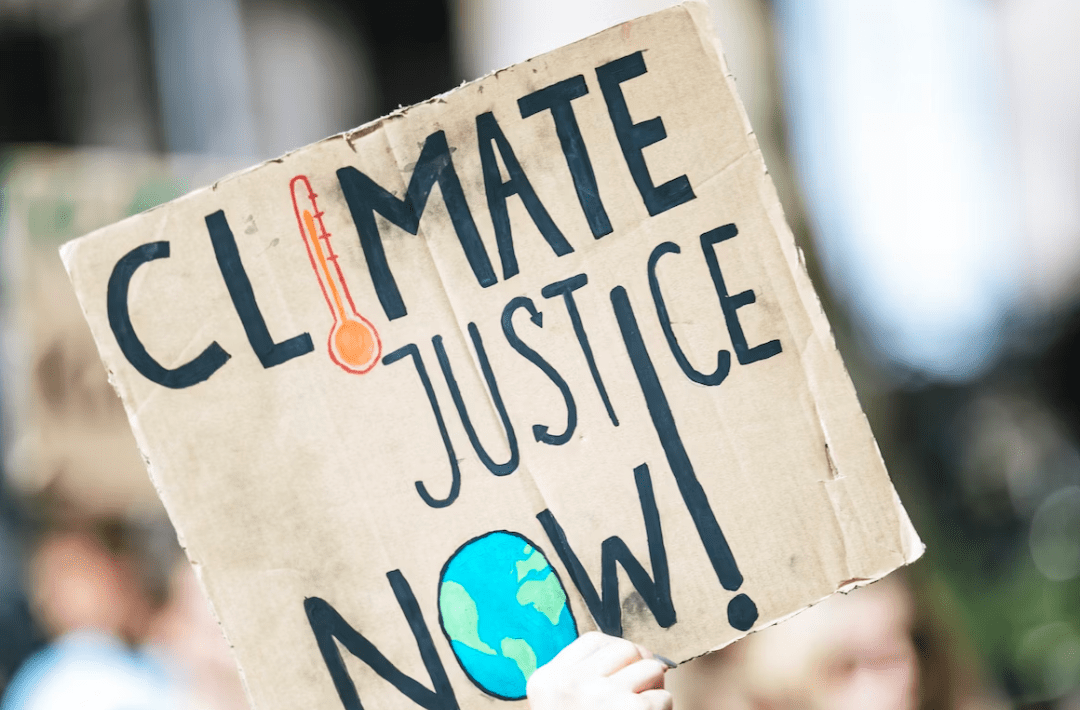
Climate Responsibility: Strengthening the Existing Frameworks
by Virginia Raffaeli
This article follows on from a previous ClimaTalk article on climate responsibility principles and frameworks, in which it was determined that the Paris Agreement is the most successful climate framework designed this far, since it allows for emission reduction targets to evolve over time to reflect changes in the global sphere [1]. The question that the previous article left unanswered, however, concerned the possibility of the existence of a framework which merges both the flexibility and inclusivity of the ‘common but differentiated responsibilities and respective capabilities’ (CBDR-RC) with binding emission-reduction requirements.
The Emissions Gap
In the Paris Agreement 196 countries committed to cut their climate pollution according to Nationally Determined Contributions (NDCs) and to strengthen those commitments over time [2]. Since there are no specific requirements regulating how or by how much countries should cut emissions, national plans vary greatly in scope and ambition [3]. The variations are claimed to reflect different capacities and levels of development, as well as different historical responsibilities [3].
The US, for instance, has committed to reach net zero carbon emissions no later than 2050 [4], China before 2060 [5]. The EU states, on the other hand, have committed to a binding target of a net domestic reduction of at least 55% in greenhouse gas (GHG) emissions by 2030 compared to 1990 [6]. Before COP26 began, an official analysis published by the United Nations showed country pledges would still put the world on track for 2.7°C of warming [7].
With India’s October 2021 pledge to reach net zero GHG emissions by 2070, the International Energy Agency claimed that this may put the world on track for 1.8°C of global warming [8]. This is much more positive than the data published in Glasgow by Climate Action Tracker, according to which we are, instead, closer to 2.4°C, which is still very far from the 1.5°C of warming targeted by the Paris Agreement [9].
This large emissions gap demonstrates how, alone, the NDCs are an insufficient solution to the climate crisis.
Establishing Minimum Requirements
Although the NDCs have been designed to reflect the CBDR-RC principle, it is arguable that the flexibility has come at the cost of real, short-term objectives. In fact, many states are pursuing net-zero emission targets, rather than zero GHG emissions [10]. “Net-zero” refers to the balancing out of climate pollution, as opposed to actually halting GHG emissions [10]. This can significantly blur the lines regarding what their climate targets actually are [10].
One way in which the Paris Agreement and the NDC framework could be strengthened would be through the determination of binding short-term emission-reduction goals which states must fulfil by a certain date.This could entail, for example, the phase out of a specific fossil fuel, as over 40 countries pledged to do in the case of coal during COP26 [11].
The Paris Agreement could also be amended to include minimum requirements for the reduction in GHG emissions which are attributed to different states according to the “subtle differentiation” of countries into different subsets which is reflected in the Paris Agreement [12]. It could require Developed States, for example, to reduce their emissions by a minimum of x% every year, whileDeveloping States would be bound by a lower percentage, with the aim of collectively achieving a minimum net reduction of y% each year.
In a similar manner, the Paris Agreement could use GDP as a factor to determine minimum fossil fuels divestment and minimum investment by states in renewable energies.
Since the Paris Agreement creates a framework for the transparent monitoring, reporting, and increasing of countries’ individual and collective climate goals, setting these minimum targets would provide a means of holding states accountable for their efforts [3]. The Global Stocktake of the Paris Agreement (GTS) could be used to progressively update these minimum targets on the basis of the global progress made [13, 14].
Holding Non-State Actors Accountable
Another area which was left unaddressed in the existing climate framework is the responsibility of the private sector [15]. Indeed, although the emissions of a company are included within those of the states it operates in, it is actually corporations that are the world’s largest GHG emitters [15]. Similar to states, corporations have been heavily criticised and even found liable by courts for often making bold net-zero pledges rather than committing to clear reduction targets [10].
Holding the world’s largest corporate emitters through their own version of the NDCs —- and their evaluation during the global stocktake —- directly accountable for their contribution to the climate crisis at the UNFCCC level could be an effective means of “moving climate talks from rhetoric to action” [15].
In conclusion, although the Paris Agreement is the best framework that we have been able to agree on thus far, there are numerous ways in which it could be improved. Establishing minimum requirements would not go against the principle of CBDR-RC, but ensure that real and visible progress is actually made in a timely manner. Similarly, holding the world’s biggest corporate emitters accountable at the international level would give them a true incentive to join us in the fight against the climate crisis.
*Featured image courtesy of the UNFCCC Flickr page.
References
[1] Luomi M. (2020). ‘Global Climate Change Governance: The Search for Effectiveness and Universality’. IISD Earth Negotiations Bulletin, 6: 2-3, 5-9. URL: https://www.iisd.org/projects/still-only-one-earth-lessons-50-years-un-sustainable-development-policy [Accessed 5 November 2021].[2] Paris Agreement to the United Nations Framework Convention on Climate Change, (Dec. 12, 2015). U.N. Doc. FCCC/CP/2015/L.9/Rev/1. Art. 2(1). Available at https://unfccc.int/files/meetings/paris_nov_2015/application/pdf/paris_agreement_english_.pdf [Accessed 5 November 2021].
[3] Denchak M. (2021). ‘Paris Agreement: Everything You Need to Know’. Natural Resources Defence Council (19 February 2021). URL: https://www.nrdc.org/stories/paris-climate-agreement-everything-you-need-know [Accessed 8 November 2021].
[4] ‘USA: Country Summary’ (last updated 4 November 2021). Climate Action Tracker. URL: https://climateactiontracker.org/countries/usa/ [Accessed 24 November 2021].
[5] ‘China: Country Summary’ (last updated 3 November 2021). URL: https://climateactiontracker.org/countries/china/ [Accessed 24 November 2021].
[6] ‘Germany: Summary of the First Nationally Determined Contribution (Submitted 12/18/2020)’. Climate Watch Data. URL: https://www.climatewatchdata.org/ndcs/country/DEU?document=revised_first_ndc [Accessed 19 November 2021].
[7] UNEP, UNEP DTU Partnership (2021), Emissions Gap Report 2021: The Heat Is On – A World of Climate Promises Not Yet Delivered – Executive Summary. Nairobi: UNEP Resources: IV URL: https://wedocs.unep.org/bitstream/handle/20.500.11822/36991/EGR21_ESEN.pdf [Accessed 1 December 2021].
[8] Shankleman J. (2021). ‘Top Energy Agency Says COP26 Pledges Signal 1.8°C of Warming’. Bloomberg (4 November 2021), URL: https://www.bloomberg.com/news/articles/2021-11-04/top-energy-agency-says-cop26-pledges-signal-1-8-c-of-warming [Accessed 8 November 2021].
[9] Harvey F. (2021). ‘World on Track for Disastrous Heating of More than 2.4C, says key report’. The Guardian (9 November 2021), URL: https://www.theguardian.com/environment/2021/nov/09/cop26-sets-course-for-disastrous-heating-of-more-than-24c-says-key-report [Accessed 19 November 2021].
[10] Irfan U. (2021). ‘Are “Net-Zero” Climate Targets Just Hot Air?’. Vox (29 October 2021). URL: https://www.vox.com/22737140/un-cop26-climate-change-net-zero-emissions-carbon-offsets [Accessed 8 November 2021].
[11] Harvey F., Ambrose J., Greenfield P. (2021). ‘More than 40 Countries Agree to Phase Out Coal-Fired Power’. The Guardian (3 November 2021). URL: https://www.theguardian.com/environment/2021/nov/03/more-than-40-countries-agree-to-phase-out-coal-fired-power [Accessed 8 November 2021].
[12] Pauw P., Mbeva K., van Asselt H. (2019). ‘Subtle Differentiation of Countries Responsibilities under the Paris Agreement’. Palgrave Communications, 5: 5. URL: https://doi.org/10.1057/s41599-019-0298-6 [Accessed 19 November 2021].
[13] ‘Global Stocktake’. UNFCCC. URL: https://unfccc.int/topics/global-stocktake [Accessed 1 December 2021].
[14] Dagnet Y., Holt M. (2020). ‘Insider: Making the Paris Agreement Work: Strengthening the Process Driving Ambition’. World Resources Institute (1 October 2020). URL: https://www.wri.org/insights/insider-making-paris-agreement-work-strengthening-process-driving-ambition [Accessed 8 November 2021].
[15] Streck C. (2021). ‘Strengthening the Paris Agreement by Holding Non-State Actors Accountable: Establishing Normative Links between Transnational Partnerships and Treaty Implementation’. Transnational Environmental Law, 10(3): 495, 515. URL: https://doi.org/10.1017/S2047102521000091 [Accessed 19 November 2021].
[16] Riley T. (2017). ‘Just 100 Companies Responsible for 71% of Global Emissions, Study Says’. The Guardian (10 July 2017). URL: https://www.theguardian.com/sustainable-business/2017/jul/10/100-fossil-fuel-companies-investors-responsible-71-global-emissions-cdp-study-climate-change [Accessed 8 November 2021].



